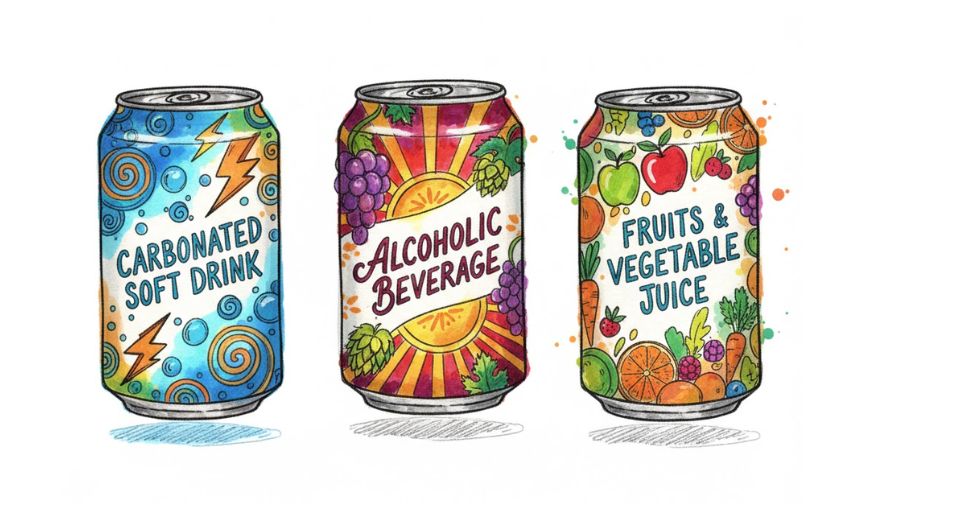
Nov 05, 2025

Since convenience and sustainability are more and more influencing buying behaviour, where packaging innovation meets everyday utility is the global beverage cans market offered by Metastat Insight. Whether it is cold soda from a vending machine or microbrewed beer at a Saturday bash, this market touches on immeasurable moments of consumption. It is significant because the can becomes an integral part of the experience as much as the beverage lightweight, portable, recyclable with increasing interest from consumers and brands alike. With increased focus on sustainable packaging and changing beverage formats, metal can sizes are in growing demand.
Market Context
The packaging of beverages has been facing several pressures: consumers looking for not only brand and flavour, but a light environmental profile as well; brands looking for packaging that will enable lower shipping weight, minimize shelf space, and transmit a value proposition; and regulators requiring less plastic usage and increased recyclability. These are the pressures against which the beverage can market comes across as an enabling force possessing strength, recyclability, and a more robust sustainability narrative. The transition from glass or plastic to metal cans in packaging has gained pace as consumer goods companies and manufacturers look to solutions that address logistics, brand, and sustainability needs. It is reported that aluminum cans lead due to their low weight and high recyclability profile.
How It Works / Why It's Valuable
Fundamentally, the business is one of manufacturing and distributing metal cans mainly aluminum, with occasional steel to contain drinks of some kind (soft drinks, alcohol, ready-to-drink, juice). The product/technology has numerous distinctive strengths: increased transport efficiency (lighter than glass), excellent recycling (aluminum can be re-used infinitely with minimal energy expenditure), pleasing on-shelf appearance (metal finishes, bright printability), and excellent protection of contents (oxygen/UV barriers, transit integrity). The beauty is in how brands can extend shelf life, preserve flavour integrity, pack for convenient use, and facilitate sustainability commitments through can solution selection. An example is the extremely high recycling rate of aluminum cans, with it producing a strong story about the environment that cannot be matched by other alternative pack forms.
Growth Story / Technological Evolution
Metal for use in drink has developed over the years–from specialty use in beer and carbonated soft drinks to mass use in all soft drinks, energy drinks, and new types of beverages. The can in earlier times was just a package; more recently it has been a value-added piece with thinner gauge metal, special coatings, improved print finishes, and added functionality (e.g., resealable closures, lighter weight, hybrid materials). Aesthetic innovation and electronic print have facilitated more expressive branding. Industry observation records new drink launches increasingly opts for can as initial package size, indicative of the package's change of role from secondary to primary strategic packaging. The can package form has transitioned throughout the years from functional package to branding differentiation vehicle, cost reduction and sustainability messages.
Regional or Global Trends
Geographically, adoption is still a strong foundation in North America because of an established beverage marketplace, sufficient recycling infrastructure and consumption awareness regarding green packaging. Asia Pacific, however, exhibits highest growth opportunities: urbanization, improved on-the-go beverages consumption, and expansion of ready-to-drink category drive demand for can forms in the area. Next is Europe with its own legislative drive towards circular packaging. Expanding economies like Latin America and some areas in Africa also carry high potential due to changing consumption patterns and a lack of alternative packaging systems.
Challenges and Opportunities
Albeit promising momentum, there are challenges still. Raw material cost pressure (most notably aluminium price volatility) and energy-hungry production can compress margins for canmakers. Infrastructure constraints in some markets (e.g., less than optimal recycling flows or logistics/transport inefficiencies) also deter full benefit realisation. In addition, regulatory uncertainty over packaging standards, together with competition from cartons or lightweight plastic, are long-standing headwinds. On the other hand, there are enormous opportunities: additional weight reduction technology, intelligent can labelling (interactive surfaces, QR codes), premiumisation of beverage packaging (functional drinks, craft) and the sustainability imperative deliver new top-line opportunities. Collaborations between beverage firms and canmakers on custom designs, aesthetic or functional elements (resealable tabs, flavour-savin' linings) also leave room for differentiation.
Why It Matters Now
The Metastat Insight global beverage cans market report emerges at the right moment in the era of global transformation: the food-and-beverage industry is under pressure to cut waste, boost recycling and meet on-the-move consumers. While brands are pushing into new beverage categories (zero sugar, energy, functional water), the packaging needs to keep pace and the can format provides one of the most flexible solutions. From a sustainability perspective, the move to metal cans helps spur circular economy thinking and reduces reliance on single-use plastic. Overall, that company is far more than about packaging it is helping to realign industry practice with wider social ambitions. The international beverage cans market is not only going to influence the packaging decisions, but how people drink, transport and recycle their beverages.
Drop us an email at:
Call us on:
+1 214 613 5758
+91 73850 57479